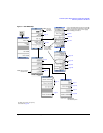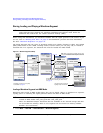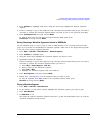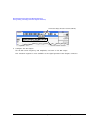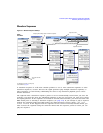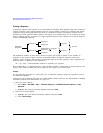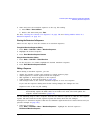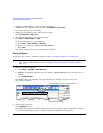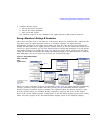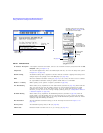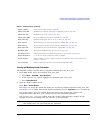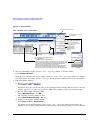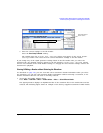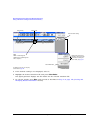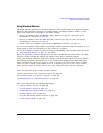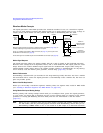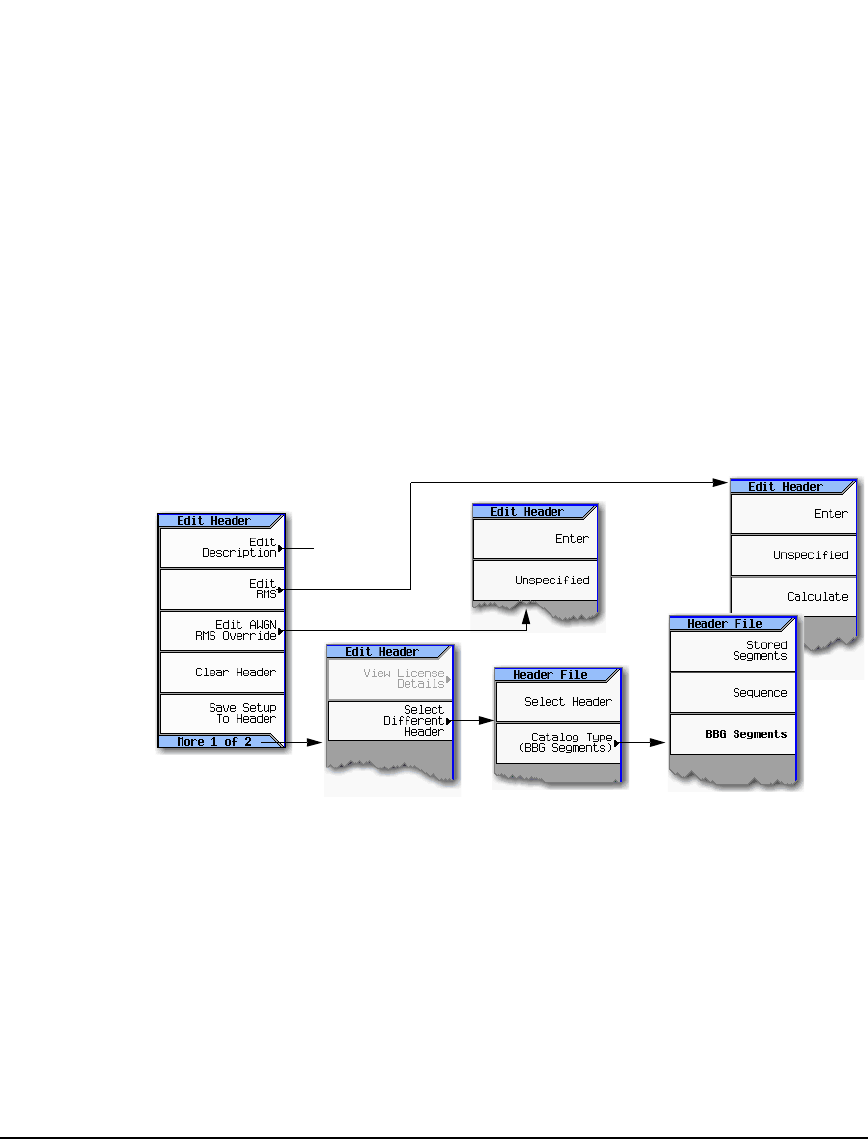
Agilent N5161A/62A/81A/82A/83A MXG Signal Generators User’s Guide 141
Preliminary Basic Digital Operation (Option 651/652/654)
Preliminary Saving a Waveform’s Settings & Parameters
3. Configure the RF output:
a. Set the RF carrier frequency.
b. Set the RF output amplitude.
c. Turn on the RF output.
The waveform sequence is now available at the signal generator’s RF OUTPUT connector.
Saving a Waveform’s Settings & Parameters
This section describes how to edit and save a file header. When you download only a waveform file
(I/Q data, which the signal generator treats as a waveform segment), the signal generator
automatically generates a file header and a marker file with the same name as the waveform file.
Initially the file header has no signal generator settings saved to it, and the marker file consists of all
zeros. For a given waveform, you can save signal generator settings and parameters in its file header
and marker settings in its marker file (page 147); when you load a stored waveform file into BBG
media, the file header and marker file settings automatically apply to the signal generator so that the
dual ARB player sets up the same way each time the waveform file plays.
Figure 8-4 Header Utilities Softkeys
When you create a waveform sequence (as described on page 138), the signal generator automatically
creates a waveform sequence header that takes priority over the individual waveform segment
headers. During a waveform sequence playback, the segment headers are ignored, except to verify
that all required options are installed. Storing a waveform sequence also stores its file header.
Some of the current signal generator settings shown in the file header appear as part of the softkey
labels, and others appear in the dual ARB summary display, shown in the following example.
page144
Mode > Dual ARB >
More >
Header Utilities
For details on each key,
use key help
as described on
page 42.



